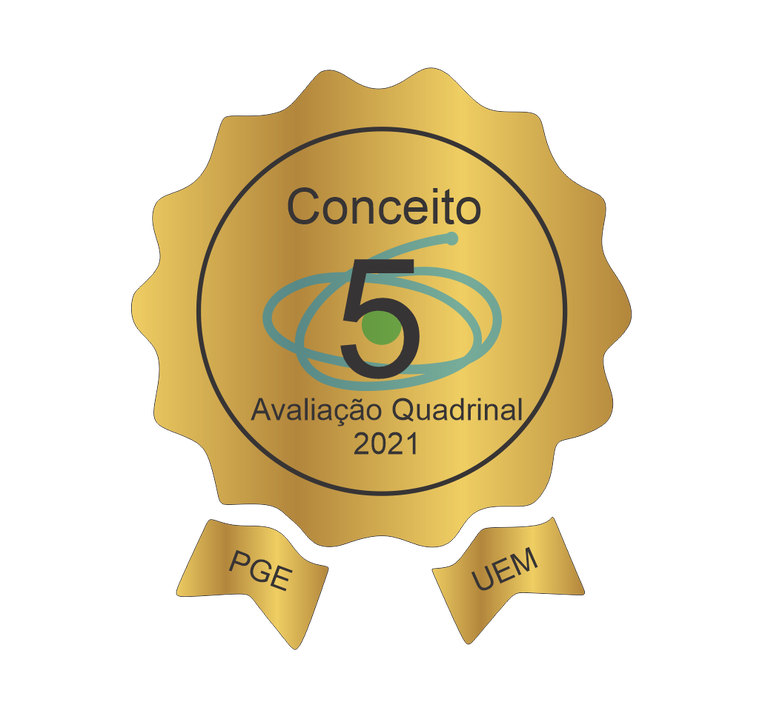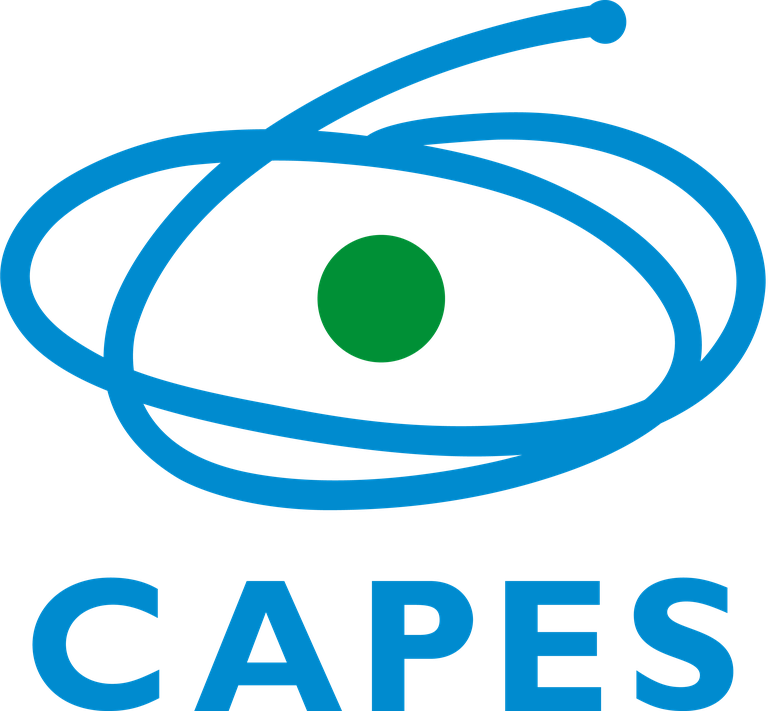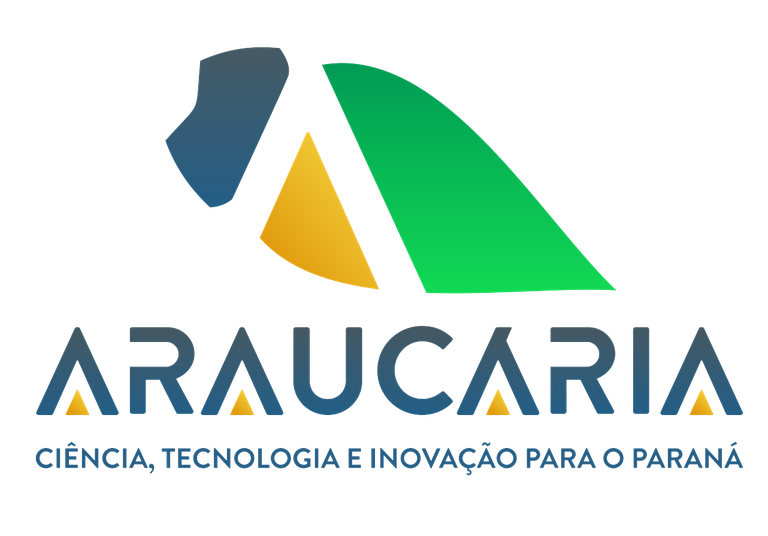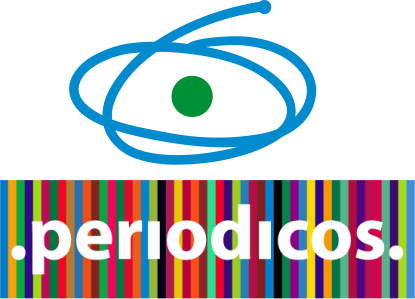Infrastructure
UEM’s Graduate Program in Geography has the following physical infrastructure:
|
Laboratories |
Area (m2) |
| Sedimentology and Palynology Laboratory (Building 24-01) |
48,6 |
|
Pedology Laboratory (Building: J-12 – class: 16) |
41,96 |
| Geoprocessing Laboratory I (Building: J-12 – class: 04) |
44,86 |
|
Territorial Dynamics Laboratory (Building: J-12 – class: 10) |
28,10 |
| Landscape Biogeodynamics Laboratory (Building: J-12 – class:28) |
26,15 |
|
Maringá Main Climatological Station (Building 001) |
79,32 |
|
Office/Coordination Room (Building: H-12 – class:18) |
27,00 |
|
Mini-auditorium (Building: H-12 – class:14) |
71,63 |
| Study room (Building: J-12 – class:09) |
28,03 |
All laboratories are connected to the internet (World Wide Web) and intranet (Paraná State computer network server).
Each laboratory integrated into the Department of Geography has a coordinator in charge with its own operating rules in line with the activities carried out in the PGE. In addition to the regular teachers and students of the PGE, there are other users who are undergraduate students involved in Scientific Initiation Projects - PIBIC and PIC, supervised internships for Bachelor's degree and Teaching License, extension and teaching projects:
Sedimentology and Palynology Laboratory
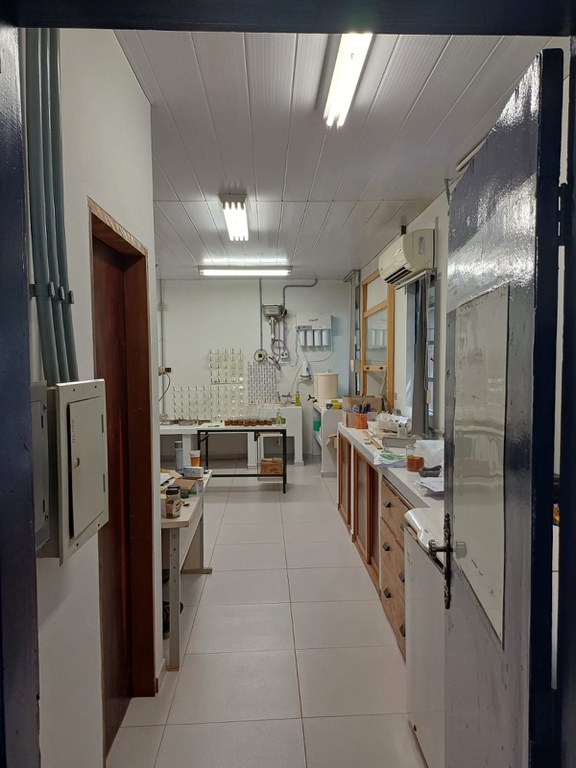


This laboratory provides support for determining the physical and chemical parameters of samples used in research by master's and PhD students, as well as undergraduate students in Geography. It is used for the preparation and microscopic analysis of thin sections of undeformed soil and sediment samples. In addition to these analyses, particle size, suspended load, organic matter, heavy minerals, bulk density of soils and sediments, impregnation of soil and sediment samples, preparation of slides for diffractometric analysis, determination of humic and fulvic acids (paleoenvironment), reactivity of clay with blue methylene, erodibility test (water absorption and loss of mass weight by immersion) and infiltration test are carried out. It is also used in practical classes for PGE courses: Fluvial Geomorphology and Sedimentology, Assessment of Impacts on the Fluvial System, Structural Analysis of the Pedological Cover and Paleoenvironmental and Paleogeographic Interpretation based on Bioindicators.
Pedology Laboratory
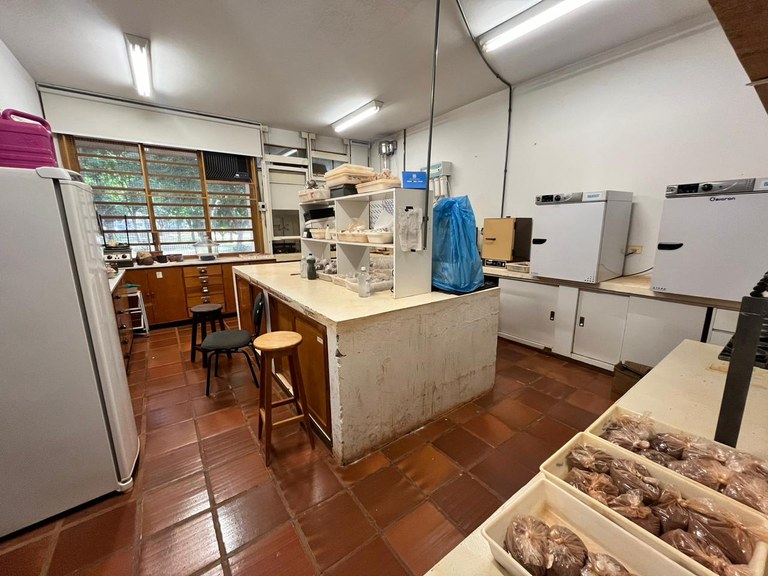
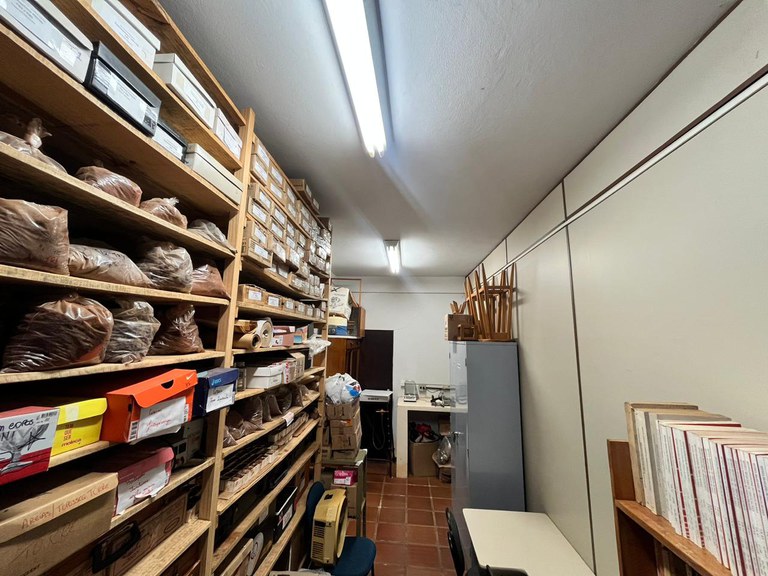
It provides support for determining physical parameters of samples from master's and doctoral students, as well as undergraduate and undergraduate students in Geography. This laboratory has equipment for performing various tests such as: granulometric analysis, Liquid Limit (LL), Plasticity Limit (LP) and Plasticity Index (PI), particle density, total porosity, gravimetric moisture, and volumetric moisture. This laboratory is used in practical classes of the PGE subjects: Tropical Soils: Genesis and Organization, Methods and Techniques of Pedological Analysis Applied to Geographic Studies, and Structural Analysis of Pedological Cover.
Geoprocessing Laboratory
This laboratory has equipment for the analysis and visual interpretation of remote sensing products (aerial photographs, satellite and radar images) and digital cartography. It also contains a collection of aerial photographs, satellite and radar images, topographic maps of various regions of Brazil and a GPS (Global Positioning System) device. The microcomputers (30) are used for geoprocessing activities involving the digital processing of remote sensing products using the SPRING and gvSIG1.2 programs; for processing and editing cartographic and remote sensing products. Several master's and PhD students, as well as undergraduate students in Geography, use this laboratory in addition to the Program's courses: Remote Sensing and Environmental Analysis, the Study of Climates and their Relations with the Environment, Geoenvironmental Cartography, Production of Space and Environmental Issues in Brazil, Impact Assessment on the River System and Techniques for Structural Analysis of the Relief, Advanced Thematic Cartography, Cartographic Project for Conventional Interactive Thematic Cartography.
Territorial Dynamics Laboratory

Physical space for individual and group work with the aim of bringing together research developed by the Department of Geography and the Graduate Program in the area of Human Geography, available to teachers and students of the master's degree, PhD, scientific initiation and undergraduate course in Geography. The disciplines in the program that use this laboratory are: Real Estate Market Agents and Verticalization; Production of Urban Space; Urban Space, Social Conflicts and Power; Population Studies and Regional Development; Small Cities, Municipality and Local Scale; State, Public Policies and Regional Development Strategies; Theory and Method in Geography; Geographic Networks; Real Estate Market Agents and Urban Entrepreneurship; Population Movement: Adaptive Mechanisms and Socio-environmental Consequences in Modern Agricultural Communities. Space effectively used by groups/groups of teachers belonging to the research field Production of Space and Territorial Dynamics, such as the Urban Studies Group (GEUR- Grupo de Estudos Urbanos) and the Mobility and Mobilization Studies Group (NEMO- Núcleo de Estudos da Mobilidade e Mobilização).
Landscape Biogeodynamics Laboratory
It is a physical space prepared for individual and group work; it aims to bring together research developed by the Department of Geography and the Graduate Program, especially in the field of research into the analysis of geographical aspects of the environment, made available to teachers and students of the master's and PhD degrees, scientific initiation programs and undergraduate course’s final works. The basic infrastructure is made up of specific equipment for biogeographical analysis, as well as various cartographic products related to the subject. This laboratory provides support for practical classes in disciplines offered by the PGE, such as: Biogeography of South America and Landscape Organization; Investigation in Health Geography: Geographical Planning Applied to the Occurrence of Communicable Diseases; Landscape Theory, Structural Geomorphology and Landscape Evolution.
Maringá Main Climatological Station

The Main Climatological Station of Maringá is a scientific research laboratory linked to the Department of Geography and the Graduate Program in Geography at UEM. This station is the result of a cooperation agreement between the State University of Maringá and the National Institute of Meteorology (Instituto Nacional de Meteorologia - INMET) signed in 1978, which has been maintained through the constant renewal of this cooperation agreement. It offers theoretical and practical support, mainly to the scientific community of Maringá and its region; it has a digitized meteorological database with a historical series of more than 30 years.
Weather reports are made three times a day: at 12, 18 and 24h GTM and are immediately passed on to INMET via telephone, but copies of these reports are kept at the station.
In addition to the observations required by the institute, the trained technical team collects hourly data on atmospheric pressure, temperature and humidity to add to the meteorological database, and also assists researchers and guided tours by graduate and undergraduate students, as well as high school and elementary school students. Due to the importance of the meteorological database, the diversity of instruments and the space available, the Climatological Station is a laboratory for the subject: Study of Climates and their Relations with the Environment.
Mini-auditorium:
CCapacity for 60 seats, with audio-visual equipment including a micro-computer (1), home theater with DVD (1) and multi-media projector (1).

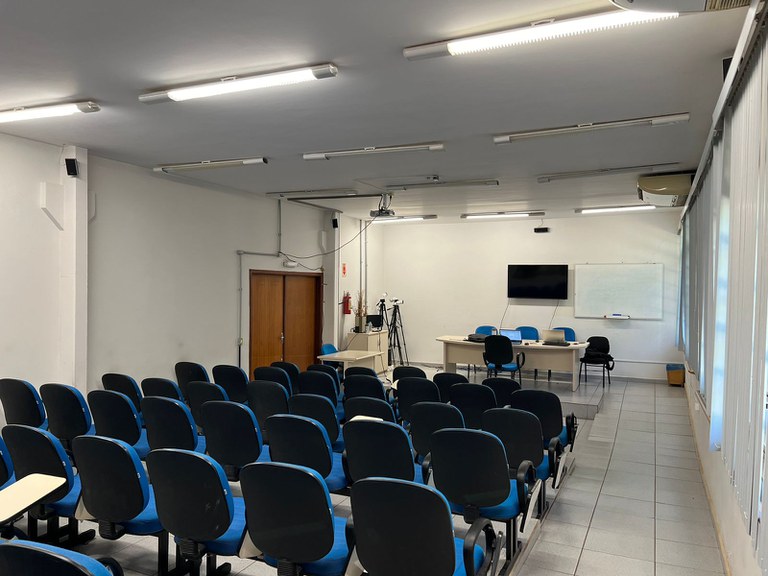
Study room
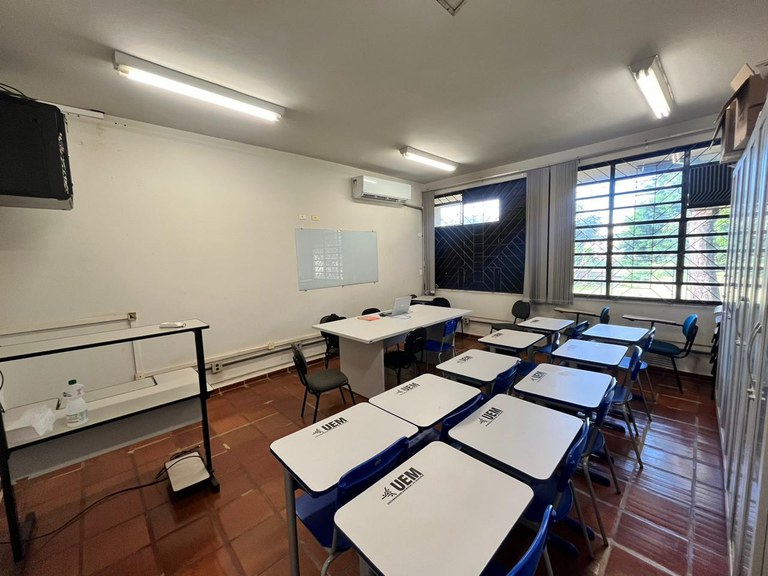
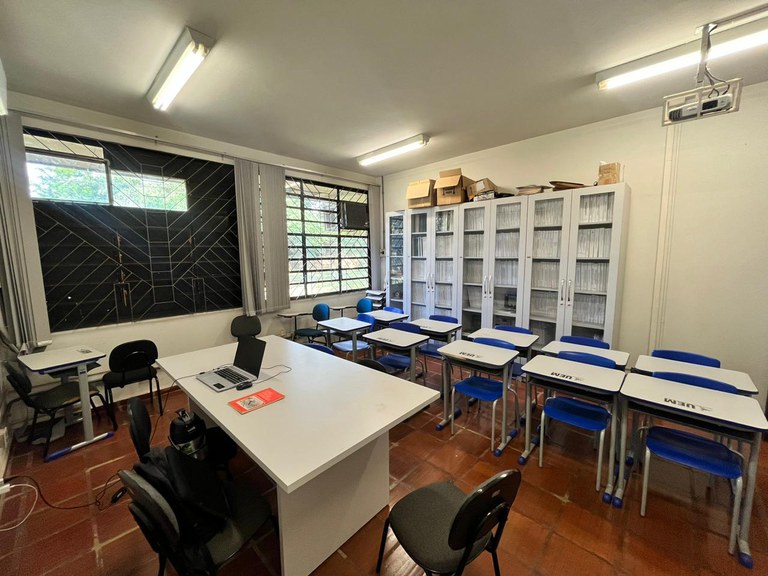
It has 6 complete (up-to-date) microcomputers, an internet and intranet network, a meeting table and lockers.
Study room
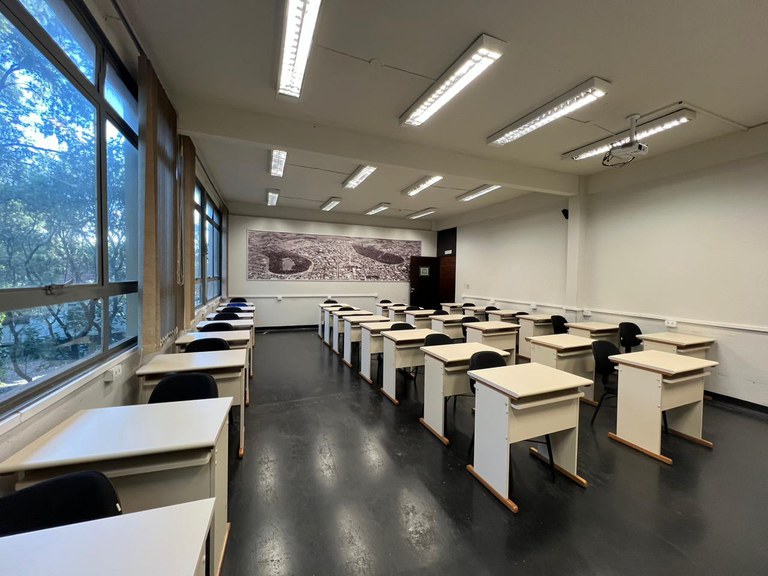
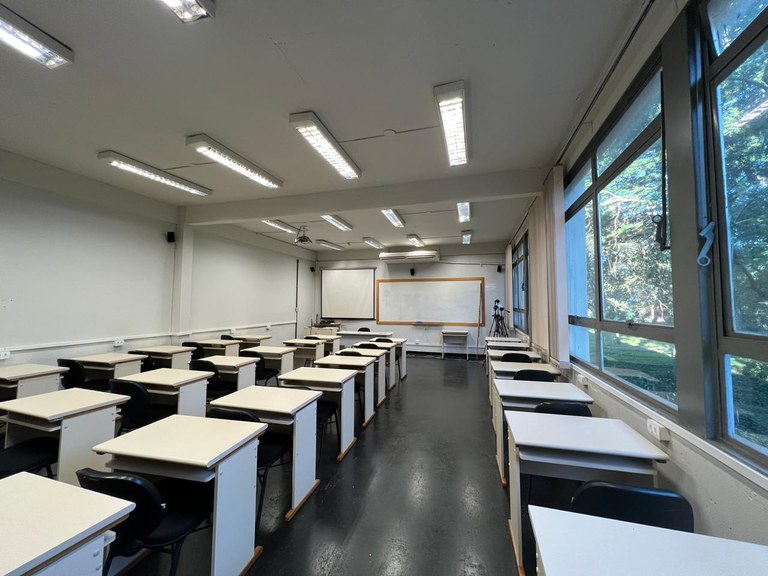
With capacity for thirty students, with audio-visual equipment including micro-computer (1), home theater with DVD (1) and multi-media projector (1).
The University has infrastructures for common use by the Strictu-Sensu Graduate Programs, such as the Central Library, the Data Processing Center, the University’s Medical and Nursing Outpatient Clinic and the Complex of Research Support Center.

